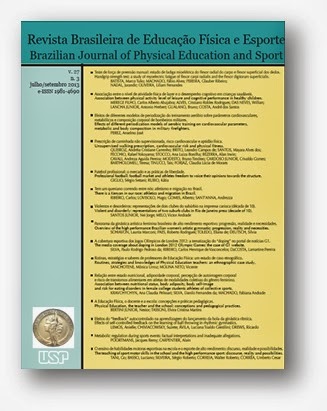Effects of self-controlled feedback on the learning of ball throwing in rhythmic gymnastics
DOI:
https://doi.org/10.1590/S1807-55092013000300014Keywords:
Motor learning, Self-controlled learning, Sport skills, ChildrenAbstract
The aim of this study was to investigate the effects of self-controlled frequency of feedback on the learning of ball throwing in rhythmic gymnastics. 24 children, ranging from 7 to 10-years old participated in the study, divided into two groups in relation to the different feedback conditions: self-controlled and externally controlled (yoked). The study consisted of a practice phase and a retention test. The results of a questionnaire showed that the majority of participants of the self-control group requested feedback mainly after good trials, while participants of the yoked group indicated that they had received feedback on the trials they desired. No differences were found regarding performance or learning. We concluded that self-controlled feedback frequencies are as effective as externally controlled feedback frequencies for the learning of rhythmic gymnastics ball throwing in children.Downloads
Download data is not yet available.
Downloads
Published
2013-09-01
Issue
Section
Pedagógica e Comportamental
License
Todo o conteúdo da revista, exceto onde está identificado, está licenciado sob uma Licença Creative Commons (CC-BY)
How to Cite
Lemos, A., Chiviacowsky, S., Ávila, L. T. G., & Drews, R. (2013). Effects of self-controlled feedback on the learning of ball throwing in rhythmic gymnastics . Brazilian Journal of Physical Education and Sport, 27(3), 485-492. https://doi.org/10.1590/S1807-55092013000300014


